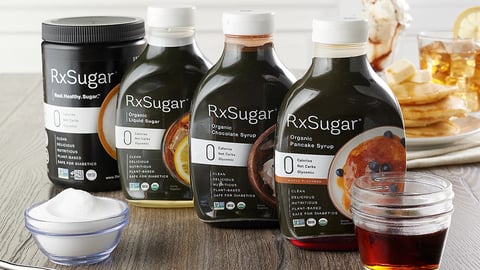Collaborative Strategies For Uncertain Times: A Look Into Suntory’s Data-Fueled Pricing Tactics
In complex environments, collaboration is key. Pricing plays a crucial role in both retail and CPG, and the ideal pricing strategy depends on product category, target market, and alignment on overall business objectives. Sounds simple enough, but add in a volatile economic environment, fierce competition, and fickle consumer behaviors, and the waters can get muddy.
A rising tide lifts all boats, however, and when it comes to today's economically uncertain landscape, Suntory is taking the approach of a collaborative strategy with retailers, consumers, and third-party partners.
In a recent conversation with CGT, Jon Plows, channel director at Suntory Beverage & Food GB&I, shared how the UK’s third largest soft drinks manufacturer and owner of brands like Lucozade Energy, Lucozade Sport, and Ribena, is threading the needle on strategic pricing decisions and pulling the trade promotion lever in several different ways.
Plows was joined in the conversation by long-term collaborator, Nick Ryan, founder and chief commercial officer of consumer products consultancy, Acumen, to add context around data and tech in consumer goods pricing and trade terms.
Build Bridges, Not Walls
For Plows, the best pricing strategy is one that strengthens partnerships and fosters collaboration, whether that be with retailers or external, third-party stakeholders. The importance of this cannot be overstated: A recent McKinsey survey revealed that companies that consistently collaborated with suppliers had higher growth, lower operating costs, and greater profitability than competitors.
When it comes to creating win-win situations for retailers and suppliers, he suggests businesses avoid focusing solely on price competition. “If everybody is trying to win on price all the time, then ultimately nobody's going to win because how do you create value? You've got to think about how you create value with your customers."
Instead, Plows recommends concentrating on creating value through initiatives such as product development, innovative strategies, and tailored promotions that go beyond mere cost considerations.
“You can base it on the category, opportunities that work in that particular retailer, and what mission you're trying to solve, and the occasion you're trying to meet. Then you can try and find some way of aligning both of your plans."
Consumer goods manufacturers share a common goal with retailers: Increasing product sales. In the eye of an economic, inflation-hit storm, however, it's important to maintain profitability while offering value to consumers.
Passing on too many costs to the retailer can result in a loss of volume, potentially disrupting the supplier-retailer relationship and jeopardizing future partnerships, Plows notes. That’s where sophisticated pricing strategies and technologies can play a role, taking out the guesswork and getting as granular as possible.
Decoding Pricing’s Power
When pressed on the tech behind pricing decisions, the exec is keen to distinguish between technology and data. “Whilst we use technology, it is the enabler to understand the data behind what we need to look at, what we need to forecast.”
As Nick Ryan puts it, retailers are more data-rich than ever, meaning the onus is on suppliers to provide visibility into something fresh and new.
“The integration of technology, such as machine learning and artificial intelligence, allows retailers to harness data more effectively, from many places – loyalty cards, satellite data at the store and checkout level, and more. For suppliers, the key is no longer winning within the existing parameters but bringing external insights that retailers might not see within their ecosystem.”
Data and data modeling allow visibility into what Plows calls “pricing power,” or the power of Suntory’s brands to create demand. “We know that we could recover all of the costs into our business and we could pass them on, but if our volume collapses because we’re uncompetitive in the market, then we’ll just count against those. We have to have a look at when we will no longer feel comfortable.”
Profit pools – which encourage businesses to look beyond revenue – provide modeling to assess the impact of budgeting decisions, not only internally but also for external customer partners in the marketplace. Ryan explains how this can drive impact, “By doing that kind of profit pool analysis, you can start to demonstrate, from a simulated margin perspective, what that would mean for the retailer.”
This can also help in planning for the future more effectively in collaboration with these partners, Plows says. “You can’t just force price through and expect the retailers to be compromised on their profit as well."
Ryan explains this technology further, outlining how these tools enable suppliers to “remodel plans for the next year based on higher input costs, what that translates through to in terms of a price increase, what the overall impact is for both parties for gross profit for the manufacturer, and then what the margin impact for the retailers is going to be as well.”






